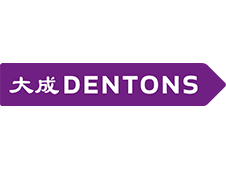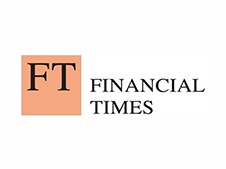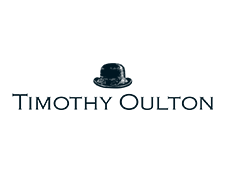Exploring the Relationship Between Collaboration, Engagement, and Creativity
Team dynamics are critical in today’s workplace. It’s not a new phenomenon. In fact, it’s almost a century old. During my human resources studies with the Chartered Institute of Personnel and Development (CIPD), I heard a story about the findings of Elton Mayo, a psychologist, sociologist and organizational theorist whose book,
The Human Problems of an Industrialized Civilization, was published in 1933.
During one study, Mayo observed the efficiency of factory ‘stokers’ at a series of furnaces.
There were several furnaces in a line and the stokers’ job was to shovel the coal into the furnace to keep the factory wheels in motion. After a few weeks of observation, Mayo made the following changes:
Firstly, he ordered that the coal, rather than been dropped in one big pile, was dropped in individual piles aligned with each of the furnaces making the stokers travelling distance and time less. Productivity went up.
Next, he ordered larger spades, twice the size, so that they could carry twice the amount of coal in one journey. Productivity went up.
He then noticed that the stokers were talking to each other between and during their journeys to take the coal to the furnaces. He built a wall between each line to so that the stokers could not see each other or talk. Productivity plummeted as a result.
Mayo also conducted other studies that showed other employee engagement—choices over work matters, reduced working days, consolidating breaks so that they were fewer but longer, and the availability of food—all increased productivity in the workplace.
So what can we learn from these age-old experiments by Mayo? The lesson is simple and straightforward: human interaction, stimulation, and collaboration are key to maintaining and improving productivity. This behavioral cause-effect is unchanged by time, environment, or demographics. It’s applicable to all working groups, no matter what industry, sector, or culture.
Dynamics of High-Performing Teams
These rules of engagement and collaboration are never clearer than in the arena of team sports. There are many individual sports that showcase high-performing individuals— maybe representing business leaders and captains of industry. But when I take a look at team sports, there are many similarities to dynamics that can be effectively employed for success in the workplace.
A sport that is close to my heart is the game of rugby. When I reflect on my days of playing the game, I recognize some distinct comparisons. Rugby is a team sport of 15 players, each with a specific role to play. My own position of fullback (jersey number 15) is a strategic defensive, offensive, and organizational role on the pitch. Each of the backs has their zones and specific roles to play, as do the fly half and scrum half, linking the forward to the backs. With maintenance of these specific zones, the critical balance between offense and defense is maintained. Where else do we see this?
This is akin to the different functional and operational roles in a business from gatekeepers, gamekeepers, to hunters, farmers, and gatherers.
Like business, rugby is also a non-stop, free flowing game with little time for rest during the 80 minutes of play. Once the whistle blows, the coach is completely reliant on the team on the pitch to remember their training, coaching, and tactics. Some say that rugby is a tough, intense game. I would agree and add that today’s workplace can often be no less tough. In fact, the most successful and high-performing teams in the sport have a lot in common with successful businesses:
• Each individual has a sense of duty to his fellow teammates to perform to the highest standards and do the right thing, not for themselves but for the team. They are engaged. They are committed and go beyond the norm.
• Rugby is a very social game with the interactions, camaraderie, and teammanship off the pitch as important to the 80 minutes on match day.
• Each individual relies on the other 14 and vice versa. The team is at one, focused, understanding their trade and together in their single objective: to win.
• There is a sense of camaraderie, ready to praise, reluctant to criticize, enthusiasm to win, together, as a team, as one.
And while rugby is often aggressive and fast-paced, it stands on the principles of civility, discipline, and respect. This decency and integrity is crucial. How teams play the game is easily as important as the outcome of the game. Rugby is one of the few sports where players are required to address the referee as ‘sir.’ Each team applauds the opposing team off the pitch at the end of every game.
The game of rugby is a micro-culture to each team. Teammates are reliant on each other, trust each other, and perform for each other. And, importantly, outside of the game, teammates are friends, mates, buddies. They have as much fun off the pitch as on it!
The Pitch and the Workplace: Finding the Similarities
So how can all of these positive team dynamics be replicated in the workplace? Creating high-performing teams in the workplace is the absolute goal of any business leader and some of the lessons from the game of rugby (and other sports) can be applied:
• Have a single objective.
• Have an approach that is embraced, like a religion.
• Create a culture of inter reliance and respect.
• Deliver the promise – both internally and externally.
• Show civility, discipline and respect to all (including competitors).
Most of these points share a theme: people like to be liked, respected, and appreciated. This philosophy can be translated in many ways for the workplace and has probably been expressed in a variety of management theory pieces over the years. But the question remains, what are the practical ways of achieving this in the modern workplace? In my view, it all starts with creating the essential team bond that you’ll find on any rugby team—or sports team, for that matter.
Creating a Team Bond
There is a link between high-performing teams and the level of social interaction they have within them. A unified team is composed of players who are more engaged and productive.
The power of teambuilding activities should never be underestimated. Whether it’s group mentoring, a company-sponsored softball team, or working on a community project, bringing employees together in the spirit of fun is essential. These moments of togetherness, much like team pregame huddles or postgame celebrations, go a long way toward unity and productivity. And while focus on team unity is key; don’t forget teams are composed of individuals.
One of my sporting heroes, a famous Full Back who missed a key Penalty Kick during a rival game for Scotland in the 1991 Rugby World Cup Semi Final. He didn’t need reminding of his missed opportunity which may well have fuelled the team to pass the England rivals to the Final. His sense of responsibility, disappointment was sufficient and despite being the highest points scorer of the tournament, lives with that torment today.
High performing teams and engaged individuals know when they have missed the mark and together they will adjust performance accordingly to meet their often self-set single objective. Equally, these teams and individuals need to be recognized with respect (and not necessarily gifts) when they do achieve.
Employee appreciation shouldn’t just be an annual event. Companies should keep employees satisfied with a culture of recognition, praise, and reward often valued more than simply the annual bonus or the Christmas Party.
Although there exist many systemic and cultural initiatives to drive this high-performing culture, there are also practical investments to keep individual players satisfied. In today’s world, the Four States of Modern Life (Home, Work, and Family & Play) are under more pressure today than ever. If you take the average full time employee, this is what a year looks like:
With work only second to sleep, this is the most time commitment any of us have over all our other life commitments.
Modern-day and forward-thinking employers can help their workforce reduce this pressure through providing a range of remuneration, benefits and employee welfare services. I think of Maslow’s Hierarchy of Needs when building this list:
• Provide remuneration that is competitive and provides a comfortable and secure life style.
• Ensure employee benefits that provide employee and family security.
• Ensure a work environment that is safe, comfortable and pleasant to be.
• Provide employee services that help employees achieve a true work-life balance.
• Promote health and wellness for themselves and their families.
• Offer clear opportunities to be regularly recognized and rewarded for outstanding individual and team results.
• Ensure an environment that facilitates social interaction, collaboration, participation and engagement.
• Ensure a culture that is stimulating, interesting and fun.
Keeping the Stats
As any good team manager knows, the numbers matter. Keeping stats of performance helps pave the way for future success. It’s the same with business.
Clearly, to make any business decision there has to be tangible return and ongoing measurement. Regular employee satisfaction surveys are great ways to health check your workforce attitudes towards your business, but by nature these can probably be conducted only once or maybe twice a year.
Some simple measurements can be included in your monthly Board Report for your business to help you understand the effectiveness of your employee welfare and benefit program, including:
• Employee Turnover (%) multiplied by business average recruitment cost
• Sickness & Absence as a % of total employee hours
• Healthcare costs
• Participation in Employee Services (by service)
• Sales per employee
• Profit per employee
There are many data points and statistics to choose from but the multiplier effect of providing such employee benefits can be a return of $10 for every $1 invested. This is a return worthy of consideration for all businesses seeking to establish and maintain high-performing teams, compete and retain the very best of talent in the modern business world.
I think it’s notable that in my work life, I can always immediately spot an employee who understands the intrinsic value of a team player mentality. Whether that coworker has played rugby, tennis, chess, or merely had a manager-coach who inspired his or her integrity, work ethic, and outcomes-focused mentality, the results show in the workplace.
How can the lessons of Elton Mayo and rugby help businesses today? The next play is yours.
Simon J. Elliot
Simon has been in the food and facilities management industry for 20 plus years and is a Fellow of the Institute of Directors, Member of the Chartered Institute of Personnel & Development, International Facilities Management Association. He is also Chairman of the Bay Area Advisory Board of Play Rugby USA – An extraordinary health and wellness resource designed to tackle the issues faced by America’s Youth. You can reach Simon at Elliot-Simon@ARAMARK.com.












































